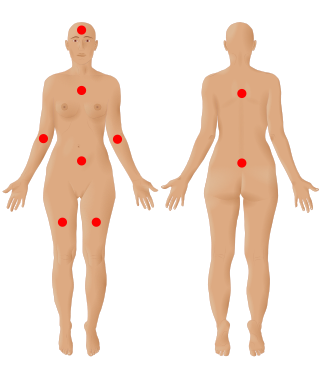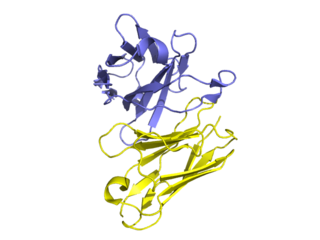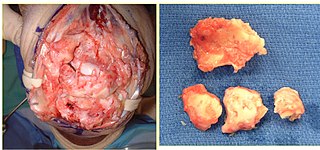
Patient education is a planned interactive learning process designed to support and enable expert patients [1] to manage their life with a disease and/or optimise their health and well-being. [2] [3]

Patient education is a planned interactive learning process designed to support and enable expert patients [1] to manage their life with a disease and/or optimise their health and well-being. [2] [3]
Education may be provided by any healthcare professional who has undertaken appropriate training education, education on patient communication and education is usually included in the healthcare professional's training. However, further training is required to develop specialist skills needed to facilitate self-management and behaviour change. [3] [4] Patient Education can often be more effective in Patient comprehension that things such as medication guides. [5] Many institutions are calling for courses in educating medical students in Technical Communication to promote Patient Education and the subsequent benefits thereof. [6]
Health education is also a tool used by managed care plans, and may include both general preventive education or health promotion and disease or condition specific education. [7] Some topics proposed in Patient Education courses include Technical and Professional Communication (TPC) and Rhetoric of Health and Medicine (RHM) in order to prepare Health educators to create simple and culturally sensitive avenues of communication. [6]
Important elements of patient education are skill building and responsibility: patients need to know when, how, and why they need to make a lifestyle change. Group effort is equally important: each member of the patient's health care team needs to be involved. It can also help the patients by a better lifestyle, it gives them the ability to learn new information.[ citation needed ]
The value of patient education can be summarized as follows:
The competencies of a health educator include the following: [14]
There are many areas where patient education can improve the outcomes of treatment.

Rheumatoid arthritis (RA) is a long-term autoimmune disorder that primarily affects joints. It typically results in warm, swollen, and painful joints. Pain and stiffness often worsen following rest. Most commonly, the wrist and hands are involved, with the same joints typically involved on both sides of the body. The disease may also affect other parts of the body, including skin, eyes, lungs, heart, nerves, and blood. This may result in a low red blood cell count, inflammation around the lungs, and inflammation around the heart. Fever and low energy may also be present. Often, symptoms come on gradually over weeks to months.

Giant cell arteritis (GCA), also called temporal arteritis, is an inflammatory autoimmune disease of large blood vessels. Symptoms may include headache, pain over the temples, flu-like symptoms, double vision, and difficulty opening the mouth. Complications can include blockage of the artery to the eye with resulting blindness, as well as aortic dissection, and aortic aneurysm. GCA is frequently associated with polymyalgia rheumatica. It can be confirmed by biopsy of the temporal artery in about 90% of people.

Gout is a form of inflammatory arthritis characterized by recurrent attacks of a red, tender, hot, and swollen joint, caused by the deposition of needle-like crystals of uric acid known as monosodium urate crystals. Pain typically comes on rapidly, reaching maximal intensity in less than 12 hours. The joint at the base of the big toe is affected (Podagra) in about half of cases. It may also result in tophi, kidney stones, or kidney damage.

Fibromyalgia is a medical condition which causes chronic widespread pain, accompanied by fatigue, waking unrefreshed, and cognitive symptoms. Other symptoms include headaches, lower abdominal pain or cramps, and depression. People with fibromyalgia can also experience insomnia and a general hypersensitivity.

Ankylosing spondylitis (AS) is a type of arthritis characterized by long-term inflammation of the joints of the spine, typically where the spine joins the pelvis. With AS, eye and bowel problems, and back pain may occur. Joint mobility in the affected areas sometimes worsens over time. Ankylosing spondylitis is believed to involve a combination of genetic and environmental factors. More than 90% of people affected in the UK have a specific human leukocyte antigen known as the HLA-B27 antigen. The underlying mechanism is believed to be autoimmune or autoinflammatory. Diagnosis is based on symptoms with support from medical imaging and blood tests. AS is a type of seronegative spondyloarthropathy, meaning that tests show no presence of rheumatoid factor (RF) antibodies.

Juvenile idiopathic arthritis (JIA), formerly known as juvenile rheumatoid arthritis (JRA), is the most common chronic rheumatic disease of childhood, affecting approximately 3.8 to 400 out of 100,000 children. Juvenile, in this context, refers to disease onset before 16 years of age, while idiopathic refers to a condition with no defined cause, and arthritis is inflammation within the joint.
A nurse-led clinic is any outpatient clinic that is run or managed by registered nurses, usually nurse practitioners or Clinical Nurse Specialists in the UK. Nurse-led clinics have assumed distinct roles over the years, and examples exist within hospital outpatient departments, public health clinics and independent practice environments.

Golimumab, sold under the brand name Simponi, is a human monoclonal antibody which is used as an immunosuppressive medication. Golimumab targets tumor necrosis factor alpha (TNF-alpha), a pro-inflammatory molecule and hence is a TNF inhibitor. Profound reduction in C-reactive protein (CRP) levels, interleukin (IL)-6, intercellaular adhesion molecules (ICAM)-1, matrix metalloproteinase (MMP)-3, and vascular endothelial growth factor (VEGF) demonstrates golimumab as an effective modulator of inflammatory markers and bone metabolism. Golimumab is given via subcutaneous injection.

Anti-citrullinated protein antibodies (ACPAs) are autoantibodies that are directed against peptides and proteins that are citrullinated. They are present in the majority of patients with rheumatoid arthritis. Clinically, cyclic citrullinated peptides (CCP) are frequently used to detect these antibodies in patient serum or plasma.

Cryopyrin-associated periodic syndrome (CAPS) is a group of rare, heterogeneous autoinflammatory disease characterized by interleukin 1β-mediated systemic inflammation and clinical symptoms involving skin, joints, central nervous system, and eyes. It encompasses a spectrum of three clinically overlapping autoinflammatory syndromes including familial cold autoinflammatory syndrome, the Muckle–Wells syndrome (MWS), and neonatal-onset multisystem inflammatory disease that were originally thought to be distinct entities, but in fact share a single genetic mutation and pathogenic pathway, and keratoendotheliitis fugax hereditaria in which the autoinflammatory symptoms affect only the anterior segment of the eye.
Anti-interleukin-6 agents are a class of therapeutics. Interleukin 6 is a cytokine relevant to many inflammatory diseases and many cancers. Hence, anti-IL6 agents have been sought. In rheumatoid arthritis they can help patients unresponsive to TNF inhibitors.
Rheumatoid nodulosis is a cutaneous condition associated with rheumatoid arthritis, characterized by the appearance of multiple nodules, most often on the hands.

1000minds is a web application for decision-making and conjoint analysis supplied by 1000minds Ltd since 2003.
The Patient Activation Measure (PAM) is a commercial product which assesses an individual's knowledge, skill, and confidence for managing one's health and healthcare. Individuals who measure high on this assessment typically understand the importance of taking a pro-active role in managing their health and have the skills and confidence to do so.

Antisynthetase syndrome (ASS) is a multisystematic autoimmune disease associated with inflammatory myositis, interstitial lung disease, and antibodies directed against various synthetases of aminoacyl-transfer RNA. Other common symptoms include mechanic's hands, Raynaud's phenomenon, arthritis, and fever.
Patient satisfaction is a measure of the extent to which a patient is content with the health care which they received from their health care provider.

Axial spondyloarthritis is a chronic, immune-mediated disease predominantly affecting the axial skeleton. The term itself is an umbrella term characterizing a diverse disease family united by shared clinical and genetic features, such as the involvement of the axial skeleton. The 2009 introduced term axial spondyloarthritis is a preferred term nowadays and substitutes the old term ankylosing spondylitis.

Post-traumatic arthritis (PTAr) is a form of osteoarthritis following an injury to a joint.
Nicola Dalbeth is a New Zealand academic rheumatologist whose research focuses on understanding the impact and mechanisms of gout. She supports clinical and laboratory research programmes and holds dual appointments as a full professor at the University of Auckland and as a consultant for the Auckland District Health Board.

Josef Smolen is an Austrian rheumatologist and immunologist and professor emeritus at the Medical University of Vienna. Since 2018 he is chairman emeritus of the Department of Internal Medicine 3 and the Division of Rheumatology at the Medical University of Vienna and Vienna General Hospital and was the chairman of the 2nd Medical Department and Center for Diagnosis and Therapy of Rheumatic Diseases at the Lainz Hospital, now the Hietzing Clinic of the Vienna Health Association from 1989 to 2017.